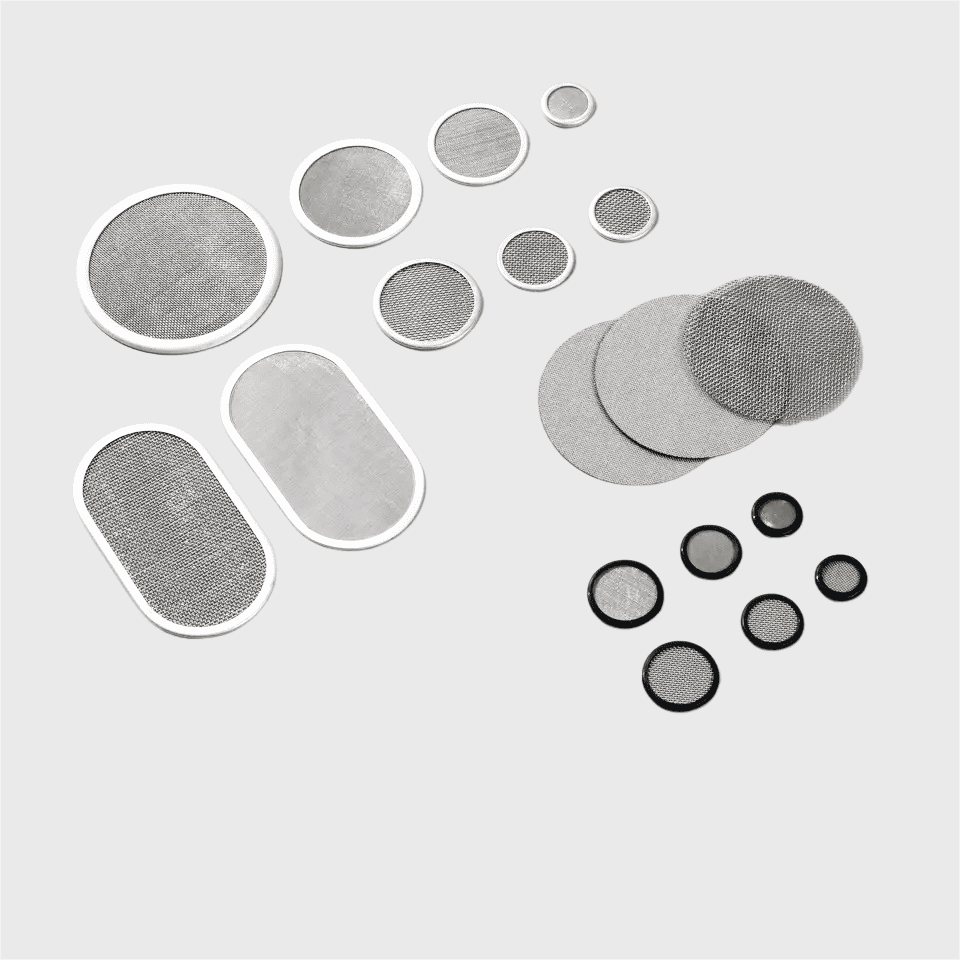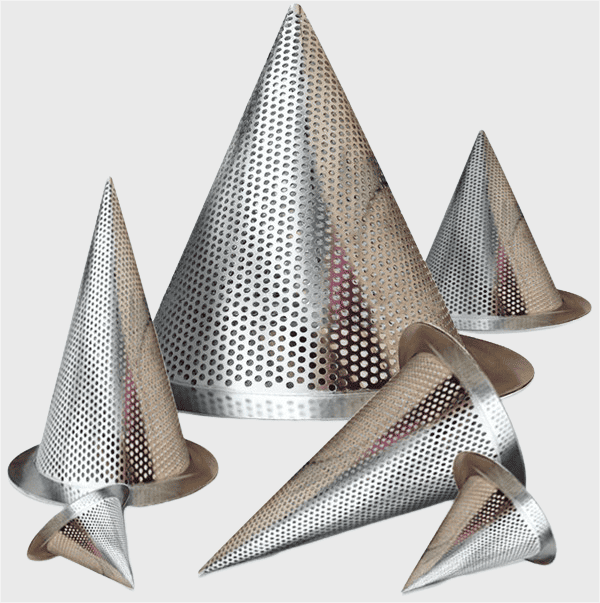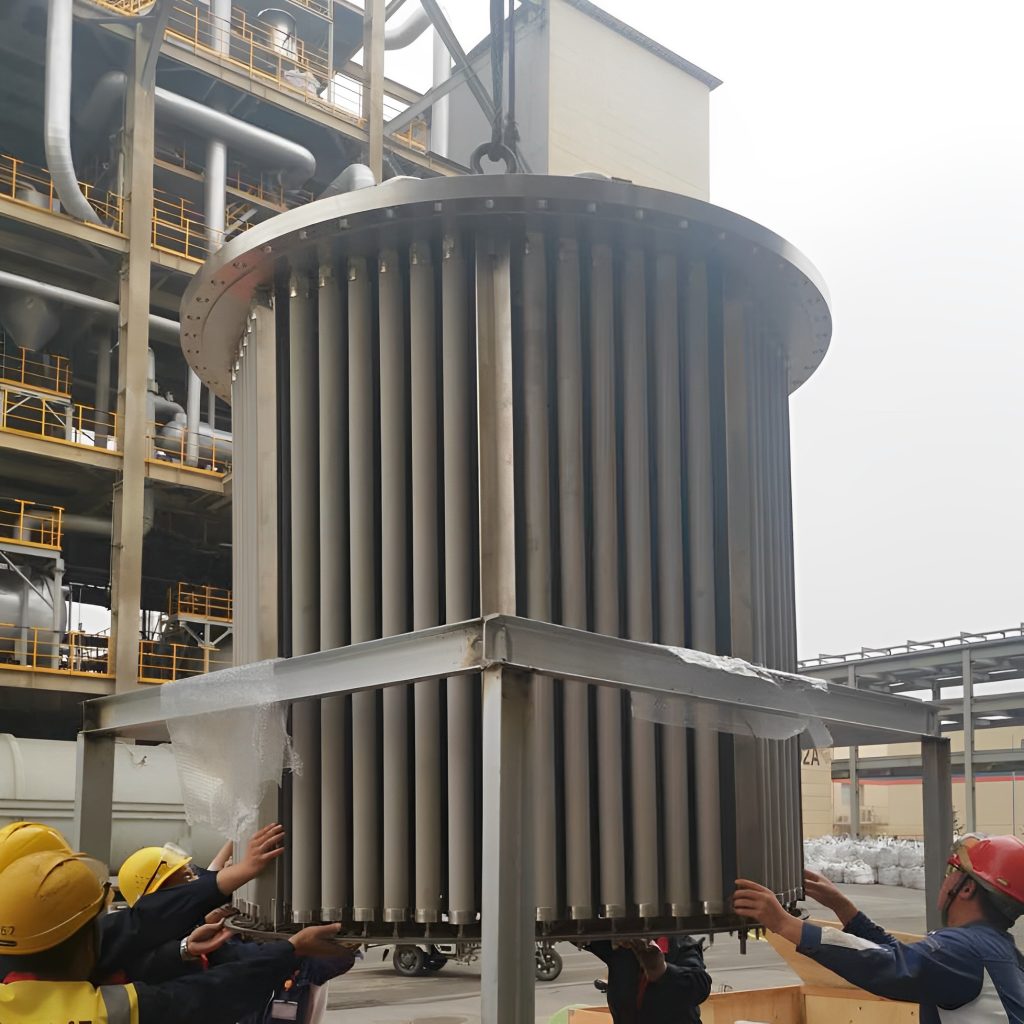Filters and strainers are both essential components in fluid systems, but they serve different roles. Strainers are designed to capture larger particles (typically above 50 microns) to protect equipment from damage, while filters focus on removing much smaller particles (down to fractions of a micron) to ensure fluid or gas purity. This article compares their primary functions, particle size handling, filtration efficiency, maintenance needs, and other key aspects. We’ll also explore the factors to consider when choosing between filters and strainers, such as flow rate, cost, and lifespan. By understanding these differences, you’ll be able to make an informed decision on which solution best fits your system’s needs, whether it’s for precise filtration or protecting your equipment from larger debris.
Table: Key Differences Between Filters and Strainers
Below is a quick comparison of the primary differences between filters and strainers. We’ve compared their primary purpose, particle size, efficiency, design, maintenance needs, and cost, among other aspects, to help you understand how each performs in fluid systems. This will allow you to make a more informed decision based on your specific needs.
|
Aspect |
Filter |
Strainer |
|
Primary Purpose |
Purify fluids |
Protect equipment |
|
Particle Size |
Fine particles |
Larger particles |
|
Filtration Efficiency |
High efficiency |
Lower efficiency |
|
Flow Rate |
Wide range |
High flow rates |
|
Maintenance |
Regular cleaning |
Easy cleaning |
|
Cost |
Higher cost |
Lower cost |
|
Lifespan |
Shorter lifespan |
Longer lifespan |
|
Environment |
High precision |
Rough filtration |
|
Material Selection |
Varies by application |
Durable materials |
|
Performance & Efficiency |
High precision |
Lower efficiency |
The table above highlights the key differences between filters and strainers. Let’s now dive into the details of their primary purpose, efficiency, maintenance, and other critical factors to help you make an informed choice.
Definition Differences
A filter is a device used to purify liquids or gases by removing fine particles and contaminants. It typically uses a porous material, such as paper, cloth, or synthetic membranes, that traps smaller particles while allowing clean fluid to pass through. Filters are essential in applications where high fluid purity is needed, such as water treatment, pharmaceuticals, and food production.
A strainer is a device used to remove larger particles or debris from liquids or gases. It functions by using mesh or wire screens to catch larger solids that could damage downstream equipment. Strainers are commonly used in industrial systems where protecting pumps, valves, and other equipment from large particles is a priority.
Types of Filters and Strainers: A Comparison
Filters and strainers come in various types—can you tell them apart? Below, we’ll explore the different types of filters and strainers to help you choose the right one for your needs.
Filters:
- Cartridge Filters: These filters are used for high-precision filtration and are suitable for medium to high flow rates. They are typically replaceable and made from a porous material.
- Bag Filters: Bag filters are commonly used when large volumes of contaminants need to be filtered and are typically designed for higher flow rates.
- Membrane Filters: These filters are ideal for fine filtration and are widely used in pharmaceutical and biological applications to remove microscopic particles.
- Activated Carbon Filters: These filters are used to remove organic contaminants, chlorine, and bad odors, and are commonly employed in water treatment systems.
Strainers:
- Y-Type Strainers: These are commonly used in pipelines to protect pumps and valves from large debris. The Y-shaped body allows easy cleaning.
- T-Type Strainers: Similar to Y-type strainers but can be cleaned without interrupting the flow. They are commonly used in systems where continuous operation is required.
- Duplex Strainers: These strainers have two parallel strainer bodies with a valve, allowing for continuous operation. One strainer can be cleaned while the other is in use.
- Basket Strainers: These strainers are designed to handle larger volumes of debris and are often used in industrial systems with large contaminants.
- Cone Strainers: Used in high-flow rate systems, especially in industries like oil and gas, to filter large particles.
Particle Size: Precision of Filtration
Filters are optimized for fine particle removal across a wide range of sizes, from large particulate matter to microscopic impurities. With pore sizes ranging from 1 micron to sub-micron, filters excel in capturing smaller particles, including bacteria, viruses, and fine dust, ensuring the highest level of fluid purity.
Strainers, on the other hand, are designed to capture larger particles and debris that are visible to the naked eye. They typically have larger mesh openings ranging from 40 microns to several millimeters. As a result, they are not effective in removing fine contaminants but are essential for protecting equipment.
Efficiency and Filtration Speed
Filters are generally more efficient in removing fine particles, ensuring high levels of fluid purity. However, they may cause a pressure drop over time as contaminants accumulate, which can slow down filtration speed.
Strainers can process fluids at higher flow rates compared to filters but are less efficient in filtering out smaller particles. Their design focuses more on ensuring that the fluid flows smoothly through the system without causing blockages, rather than achieving precise filtration.
Design: Functionality and Materials
Filters come in a variety of designs, such as cartridge filters, bag filters, and membrane filters. They are made from specialized materials such as synthetic membranes, paper, or cloth, designed for high precision and fine filtration. Filters often incorporate complex designs for specific applications like water purification, air filtration, or biological applications.
Strainers are simpler in design, often made from metal mesh, wire, or screen materials. They are designed for coarse filtration and can be constructed with a more basic structure that allows for easy cleaning and maintenance. Their main goal is to capture larger debris rather than to fine-tune the quality of the fluid.

Maintenance: Cleaning and Replacement
Filters require more frequent maintenance due to their intricate designs. They may need to be cleaned, replaced, or serviced regularly, especially as pressure drops occur. The material used in filters can become clogged with smaller particles, which diminishes their effectiveness over time.
Strainers typically require less frequent maintenance. Their cleaning is generally easier, as debris can be removed by simply cleaning the mesh or screen. However, regular inspection is still necessary to ensure they are functioning correctly and preventing larger particles from entering the system.
Cost and Lifespan: Long-Term Value
Filters are typically more expensive due to their high precision and specialized materials. While filters may need to be replaced or serviced regularly, their cost is justified by their ability to provide high-quality filtration in demanding applications.
Strainers are generally less expensive because of their simpler design and construction. They also tend to have a longer lifespan than filters, but they are not designed to handle fine filtration and may need to be paired with a filter for more precise applications.
Flow Rate and Pressure Impact: System Efficiency
Filters may cause a pressure drop over time as they capture finer particles. This can slow the flow rate, particularly in high-contaminant environments. Some filters are designed with materials that minimize the pressure loss, but in general, filters are more prone to decreasing the system’s flow rate as they become clogged.
Strainers are designed for high flow rates and do not typically cause significant pressure drop unless they are clogged with larger debris. Their main role is to ensure that flow efficiency is maintained while protecting equipment from damage.
Application and Industry Use: Where They Fit
Filters are used across a wide range of industries where purity is critical. They are essential in water treatment plants, pharmaceutical production, food processing, and biological applications, where removing fine contaminants is crucial to meeting safety standards and achieving product quality.
Strainers are commonly used in industrial systems, such as oil and gas, chemical plants, and piping systems. They are primarily used to protect pumps, valves, and other machinery by removing larger particulate matter that could cause mechanical failures or blockages.
Material Selection: Durability and Suitability
The materials used in filters are often chosen for their chemical stability, purity, and ability to withstand high-pressure environments. Materials like ceramics, fiberglass, and synthetic polymers are used for applications requiring fine filtration and long-term durability.
Strainers are typically made from more durable materials like stainless steel, bronze, or plastic, which are resistant to abrasion and corrosion. These materials ensure that the strainer can withstand high flow rates and mechanical stress while capturing larger particles.

Choosing Between Filters and Strainers
When deciding whether to use a filter or a strainer, there are several factors to consider:
1. Particle Size
If you need to remove smaller particles or contaminants, a filter would be the better choice.
If you are primarily concerned with removing larger particles or debris, a strainer would be more suitable.
2. Filtration Efficiency
If high filtration efficiency is critical for your application, a filter would be the better option.
If you can tolerate some smaller particles passing through, a strainer may be sufficient.
3. Flow Rate
If maintaining a consistent flow rate is important for your application, a filter would be the better choice.
If the flow rate is not critical, a strainer may be more suitable.
4. Maintenance
Consider the maintenance requirements of filters and strainers.
If you prefer a device that requires less frequent maintenance, a strainer may be a better option.
If you are willing to perform regular maintenance to ensure optimal filtration, a filter would be more suitable.

Common Features of Filters and Strainers
Although filters and strainers serve different purposes in fluid systems, they share several key similarities. Both are designed to remove solid contaminants from liquids or gases, ensuring the system operates smoothly and protecting downstream equipment. Specifically, they both:
- Remove Particles: Both filters and strainers help eliminate unwanted solids, though filters capture smaller particles and strainers are focused on larger debris.
- Protect Equipment: While filters ensure fluid purity, strainers prevent large particles from damaging pumps, valves, and other components.
- Material Options: Both devices are made from durable materials like stainless steel, plastic, and synthetic mesh that ensure longevity and reliability.
- Require Maintenance: Filters and strainers need regular maintenance to maintain system efficiency—filters often need cleaning or replacement, and strainers require periodic cleaning of accumulated debris.
- Widely Used Across Industries: Both filters and strainers are utilized in various industries, including water treatment, automotive, pharmaceuticals, and food processing, to ensure clean fluids and protect equipment from damage.
Wrap Up
Filters and strainers are essential components in fluid systems, each serving a unique purpose. Filters excel in removing fine particles to ensure fluid purity in applications like water treatment, pharmaceuticals, and food production, while strainers protect equipment by filtering out larger debris, preventing damage to pumps and valves.
Choosing the right solution depends on factors such as particle size, filtration efficiency, flow rate, and material compatibility. Filters are ideal for precision purification, whereas strainers provide protection against larger contaminants.
By selecting the appropriate filter or strainer for your needs, you can optimize system performance, extend equipment lifespan, and improve operational reliability. Trust Saifilter for high-quality filtration solutions that deliver efficiency and longevity for your operations.